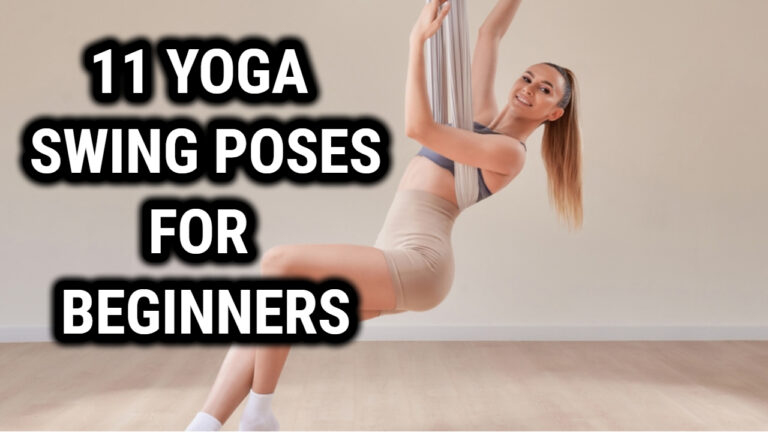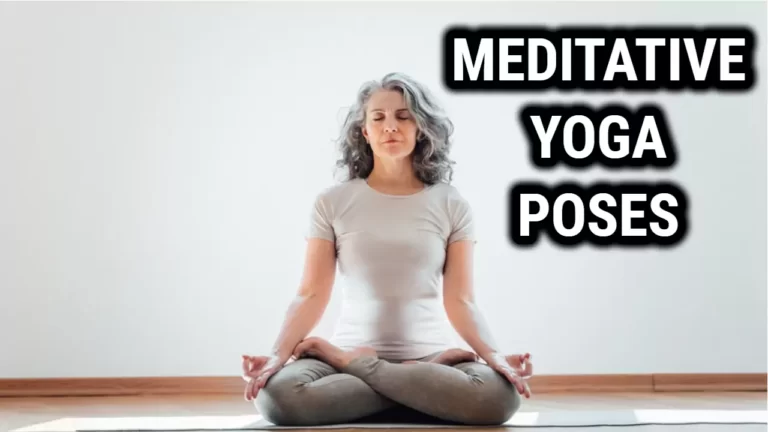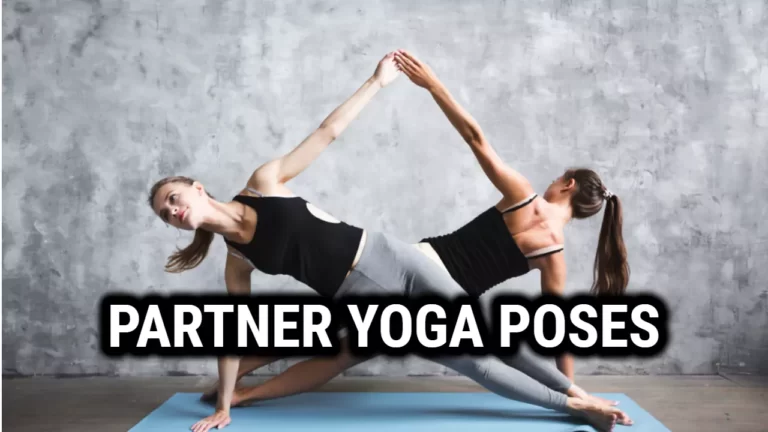Is Power Yoga Alone A Sufficient Exercise?

Power yoga has become increasingly popular in recent years as a form of exercise, but is it really enough to keep us fit and healthy?
In this article, we’ll explore the pros and cons of power yoga as an effective form of exercise, so that you can decide for yourself if it’s right for you.
Power yoga is often seen as a more intense form of traditional yoga. It involves sequences of poses that are designed to increase strength and flexibility in the body.
This type of exercise can be beneficial for those looking to improve their fitness levels, and can help build endurance and balance. However, there are also some drawbacks to consider before taking up power yoga as an exercise routine.
What Is Power Yoga?
Power yoga is a style of exercise that combines muscular strength and endurance with mental focus. It has become increasingly popular over the past few decades, with surveys showing that almost 25 million Americans have practiced yoga in the last year alone.
This high-intensity workout typically includes a combination of breathing techniques and physical poses which can help to improve overall fitness levels. Power yoga is great for those looking to challenge themselves, as it requires concentration, balance and flexibility while performing various postures.
It can also help to reduce stress and tension, as well as improve coordination and posture. While this type of yoga may not be suitable for everyone, it can provide a great way to get fit without having to invest in expensive gym equipment or classes.
Intensity Level Of Power Yoga
Power yoga is an intense form of exercise that can have a variety of benefits. It is a type of yoga that combines traditional yoga poses with aerobic elements to make the workout more challenging and vigorous.
Here are some reasons why power yoga may be a sufficient exercise:
- It increases strength and flexibility: Power yoga increases both strength and flexibility through its various poses and breathing techniques. This helps to improve overall balance, coordination, and posture while also strengthening the muscles.
- It can help you lose weight: Power yoga can be used as an effective way to burn calories and fat while toning the body. The combination of cardio exercises with traditional yoga also helps boost metabolism and aids in weight loss over time.
- It improves mental health: Regular practice of power yoga has been known to reduce stress, anxiety, depression, and insomnia. The mindful movement combined with mindful breathing techniques helps relax the mind and improve one’s overall well-being.
- It increases endurance: The dynamic movements involved in power yoga help build muscular endurance which allows you to do more physical activities without tiring easily. This makes it ideal for those who want to increase their endurance level without having to resort to high intensity workouts like running or cycling.
Power yoga may be a great choice for those looking for an intense yet enjoyable form of exercise that will help them become fitter, stronger, and healthier both physically and mentally.
Energy Output Of Power Yoga
As the sun rises, so does the intensity of a power yoga practice. Like the sun, power yoga can shine brightly and bring life-giving energy to its practitioners. It provides an engaging full-body workout that can strengthen bodies, build endurance, and leave practitioners feeling invigorated and energized.
The energy output of a power yoga practice is determined by several factors, including the intensity level of the practice, the duration of each pose held, the number of repetitions completed in each pose series, and even how much effort is put into each breath taken. The following table outlines these factors and their associated levels of energy output:
| Factor | Low | Medium | High |
|---|---|---|---|
| Intensity Level | Low | Moderate | High |
| Duration | Short | Medium | Long |
| Number of Reps | Few | Many | Many+ |
| Breath Effort | Slight | Moderate | Deep |
Overall, power yoga can be a great way to get your body moving and your heart pumping – both for beginners looking for a gentle introduction to exercise as well as more experienced practitioners who are looking for an intense workout. By combining different elements from this table with mindful breathing exercises, you will be able to customize your own power yoga experience that suits your needs.
Flexibility Benefits Of Power Yoga
Power yoga is an intense form of exercise that combines physical activity with breathing and meditation. It can be a great way to build strength, flexibility, and mental focus. The practice includes various postures, stretches, and poses that require strength and balance.
Power yoga also has many benefits when it comes to improving flexibility. The stretching involved in power yoga helps improve range of motion, which allows for greater flexibility in the body’s joints and muscles. This can help reduce pain from cramped or tight muscles, as well as increase the ability to move more freely. Additionally, stretching during power yoga helps reduce stress on the body by loosening tension from the muscles. This can help to prevent injury from physical activities like running or sports.
As a result of increased flexibility, practitioners of power yoga often find improved posture and core strength as well. Power yoga is a great way to get an all-around workout that increases physical health and mental wellbeing. With regular practice, people will begin to feel the positive benefits of improved flexibility in everyday life activities.
Strength Benefits Of Power Yoga
Power yoga is a great source of exercise that can provide many strength benefits. It’s like a powerhouse of fitness, delivering an intense workout with the ability to both invigorate and relax the body and mind.
As if that weren’t enough, it also sculpts muscles, boosts balance and builds endurance. Power yoga provides a full-body workout that combines strength training with cardiovascular exercise.
In every pose you engage your core as well as all of your major muscle groups, stimulating them to burn more fat, build muscle tone and enhance joint stability. This type of yoga will help you develop better posture, improved balance and greater agility – not to mention a stronger physique!
Even those who are just starting out can reap the rewards of power yoga; it’s perfect for any fitness level. So don’t be intimidated; give it a try and feel the difference in your health!
Pros And Cons Of Power Yoga
Power yoga is a type of exercise that combines strength, flexibility, and balance. It has many benefits and drawbacks that should be considered before starting a power yoga routine.
One of the primary pros of power yoga is its ability to build strength. Many poses require the participant to use their own body weight as resistance, which helps to tone and build muscle. Additionally, the poses require balance and focus, both of which can help improve agility, coordination, and posture. Plus, it’s a low-impact form of exercise that doesn’t put too much stress on joints or muscles.
However, it’s important to note that power yoga isn’t suitable for everyone. Certain poses may put too much strain on sore muscles or an injury site. Additionally, some people may find it difficult to keep up with the fast pace of the classes or find more traditional forms of yoga more enjoyable.
While there are many benefits to power yoga, it’s important to assess your fitness goals and abilities before committing to this type of exercise routine.
Overall, power yoga can offer a great workout for those who are looking for something challenging yet low-impact. However, it’s important to consider any physical limitations or preferences before deciding if this type of exercise is right for you.
Alternatives To Power Yoga
Power yoga has been gaining in popularity in recent years, as it provides a challenging full body workout. However, there are some drawbacks to this type of exercise, including the potential for injury if done improperly and the requirement of a certain level of fitness to keep up with the pace.
Nevertheless, there are plenty of alternatives to power yoga that can provide an effective workout when done correctly. For example:
- Low impact exercises such as walking, swimming or cycling can be just as beneficial as high intensity workouts like power yoga.
- Bodyweight training is a great way to increase strength and flexibility without putting too much strain on your joints.
- Yoga classes that focus on breathing and relaxation techniques can also provide many benefits without being overly strenuous.
Overall, no matter what type of exercise you choose to do, it is important to listen to your body and make sure you are doing it safely and correctly for best results.
Is Power Yoga Sufficient Exercise?
Power yoga is a great form of exercise. It combines traditional yoga poses with dynamic movements and aerobic exercises. This type of workout improves strength, balance, and flexibility as well as providing a cardiovascular workout.
The following table outlines the benefits of power yoga:
| Benefits | Description | Examples |
|---|---|---|
| Strength | Increases muscular strength in arms, legs, and core muscles | Warrior poses, downward-facing dog, plank pose |
| Balance | Improves coordination and balance among different muscle groups | Tree pose, mountain pose, warrior III pose |
| Flexibility | Enhances range of motion in joints and muscles throughout the body | Half moon pose, seated spinal twist, bridge pose |
Power yoga is also known for its mental health benefits. It can help to reduce stress and anxiety while improving focus and concentration. Furthermore, it encourages self-confidence which can lead to an overall sense of wellbeing and inner peace. Power yoga is an effective form of exercise that offers physical and mental benefits.
Conclusion
Power yoga is a great exercise that offers many benefits. It can help improve flexibility, strength, and overall energy levels.
However, it is not the only form of exercise that can do so. Other forms of exercise such as HIIT and weight-training offer their own unique set of benefits.
Ultimately, it is up to the individual to decide whether or not power yoga is sufficient for their needs. If one finds that it alone isn’t enough, they should consider adding other forms of exercise into their routine in order to achieve their desired results.
As long as you listen to your body and take the time to experiment with different exercises, you’ll be able to find something that works best for you.
FAQ
1. Is Power Yoga a good workout for beginners?
Power Yoga can be a good workout for beginners, as long as they work with a qualified instructor and listen to their bodies. Beginners may need to modify certain poses and movements to avoid injury and build up strength and flexibility gradually.
2. How often should I practice Power Yoga?
The frequency of Power Yoga practice depends on your individual fitness goals and schedule. For general fitness and stress reduction, practicing two to three times a week can be beneficial. However, if you’re looking to build significant muscle or improve your cardiovascular fitness, you may need to supplement with other forms of exercise and practice Power Yoga less frequently.
3. Can Power Yoga help me lose weight?
Power Yoga can be a great addition to a weight loss program, as it can help improve overall fitness and burn calories. However, it may not be sufficient on its own for significant weight loss. A balanced diet and other forms of exercise, such as cardio and strength training, may also be necessary.
4. Do I need to be flexible to practice Power Yoga?
No, you don’t need to be flexible to practice Power Yoga. In fact, practicing Power Yoga can help improve flexibility over time. However, beginners may need to modify certain poses and movements to avoid injury and build up flexibility gradually.
5. Can Power Yoga be dangerous?
Like any form of exercise, Power Yoga can be dangerous if not practiced correctly. It’s important to work with a qualified instructor and listen to your body to avoid injury. Common injuries associated with Power Yoga include wrist and knee pain from fast-paced movements and dynamic sequences.
6. What should I wear to a Power Yoga class?
Wear comfortable, form-fitting clothing that allows you to move freely. Avoid loose or baggy clothing that may get in the way during poses and movements. Many people also prefer to practice barefoot, but you can wear non-slip socks or yoga shoes if you prefer.
7. What should I bring to a Power Yoga class?
Bring a yoga mat, a towel, and a water bottle. Some studios may provide props such as blocks and straps, but you can also bring your own if you prefer.





